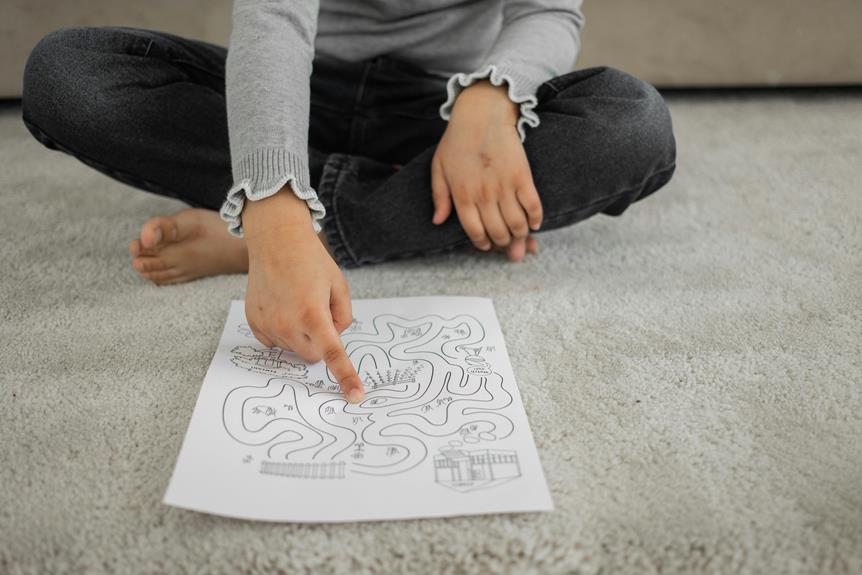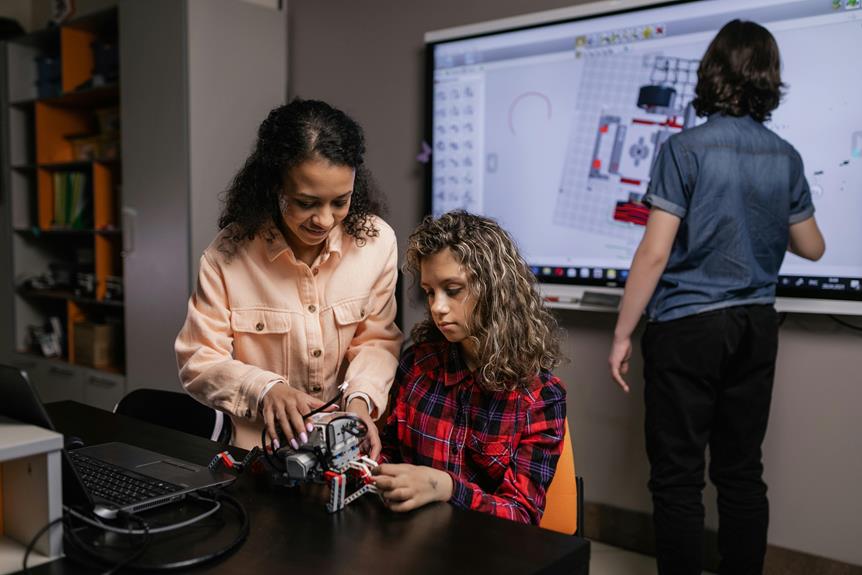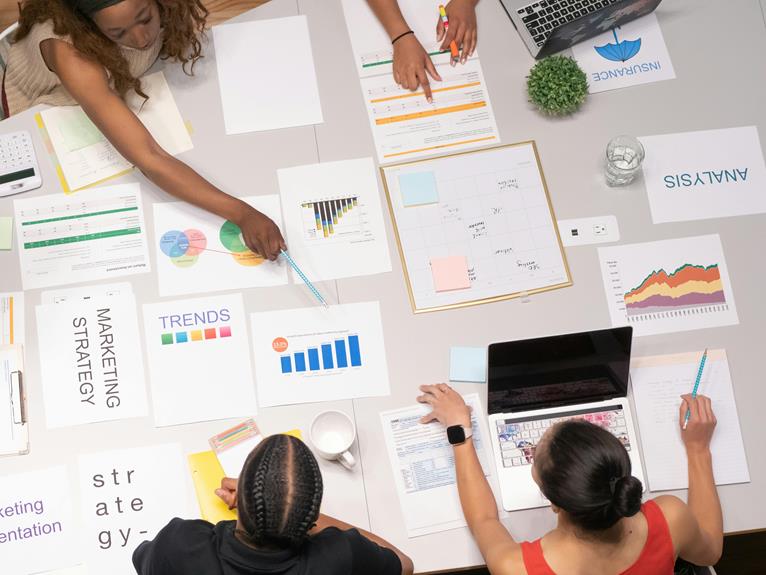Gamification in learning is a valuable method that boosts motivation, engagement, and information retention by offering interactive and entertaining educational experiences. It strategically incorporates game elements, enhancing student involvement and fostering a sense of achievement. Through gamified learning, students benefit from improved memory retention, increased motivation, and better understanding of complex concepts. Successful examples show how it revolutionizes the educational experience by providing engaging challenges and immersive virtual environments.
The impact on learning outcomes includes higher achievement levels, enhanced problem-solving skills, and improved comprehension. The implementation of gamification involves incorporating game elements, providing incentives, and offering immediate feedback. Embracing gamification in learning environments can greatly enhance the educational experience.
Key Takeaways
- Increases motivation and engagement in learning.
- Enhances retention of information.
- Provides interactive and enjoyable learning experiences.
- Fosters a sense of achievement and progress.
- Improves understanding of complex concepts.
Benefits of Gamification in Learning
Gamification brings several advantages to the world of learning. By incorporating game elements into educational content, it increases motivation, making the learning process more engaging and enjoyable. This approach leads to better retention of information and a deeper understanding of the subject matter. Through interactive learning experiences, learners of all ages are actively involved in the educational process, enhancing their overall educational experience.
Gamification in learning not only makes the learning process more engaging but also fosters a sense of achievement and progress, which can boost learners' confidence and self-esteem. Additionally, gamification can provide immediate feedback on performance, allowing learners to track their progress and identify areas for improvement. Overall, by incorporating elements of games into education, gamification has the potential to transform traditional learning methods and make education more effective and enjoyable for learners of all ages.
Enhancing Student Engagement Through Gamification
Enhancing student engagement through the strategic implementation of gamification techniques has been shown to greatly improve learning outcomes and foster a more interactive educational environment. By increasing motivation and promoting interactive learning, students are more likely to be actively involved in their education. Below is a table emphasizing key points in enhancing student engagement through gamification:
| Gamification Benefits | Description |
|---|---|
| Increases Motivation | Encourages students to actively participate |
| Interactive Learning | Engages students through interactive activities |
Improving Student Retention With Gamified Learning
To enhance student retention through gamified learning, it is important to focus on boosting memory with games. Games offer a dynamic and engaging way to reinforce learning. By incorporating elements of play and interactivity, educators can create an environment that encourages active participation. This approach leads to improved retention of information. It not only makes learning more enjoyable but also helps students retain knowledge more effectively in the long term.
Boosting Memory With Games
By incorporating game elements into educational activities, students can enhance their memory retention through interactive and engaging learning experiences. Memory challenges and cognitive benefits are effectively tackled using game-based quizzes, which have been shown to greatly improve memory retention.
These quizzes provide an enjoyable way for students to reinforce their learning, leading to better information recall and overall retention of knowledge.
Enhancing Engagement Through Play
Incorporating gamified elements into educational settings has been shown to greatly boost student engagement and improve retention rates.
By introducing game-like features such as points, leaderboards, and rewards, students experience increased motivation to participate actively in their learning.
This interactive learning approach not only makes the educational experience more enjoyable but also enhances students' ability to retain information effectively, leading to improved academic performance.
Encouraging Active Participation
Implementing gamification strategies in educational environments fosters active student engagement, resulting in enhanced retention rates and improved academic performance. By incorporating elements such as points, levels, and rewards, gamified learning increases motivation and encourages active participation.
This approach transforms passive learners into actively engaged participants, promoting hands-on experiences and collaborative activities. Through active learning facilitated by gamification, students are more likely to retain information and achieve better educational outcomes.
Gamification Techniques for Better Understanding
When seeking to enhance comprehension and engagement in educational settings, employing gamification techniques can prove to be a valuable strategy.
By integrating interactive challenges into the learning progression, students are motivated to actively participate and progress through the material.
These techniques can help break down complex concepts into more digestible chunks, making it easier for learners to grasp and retain information effectively.
Successful Examples of Gamification in Education
The successful implementation of gamification in education has led to engaging learning experiences, improved student motivation, and enhanced knowledge retention.
By incorporating game elements into educational activities, students are more actively involved in the learning process, leading to increased interest and participation.
This approach not only makes learning more enjoyable but also boosts student performance and understanding of the material.
Engaging Learning Experiences
Incorporating gamification into educational settings has revolutionized learning experiences, making them more engaging and interactive for students.
- Interactive Challenges: Gamified platforms offer students a chance to tackle interactive challenges that require problem-solving skills.
- Immersive Experiences: Through gamification, students can immerse themselves in virtual worlds, enhancing their understanding of complex concepts.
- Immediate Feedback: Gamified learning provides instant feedback, allowing students to track their progress and make improvements efficiently.
Improved Student Motivation
Enhancing student motivation through gamification strategies has shown remarkable success in various educational contexts. By incorporating game elements such as points, badges, and leaderboards, educators can increase motivation, leading to improved student performance.
For example, a study at XYZ High School implemented a gamified learning platform resulting in a 20% increase in student engagement and a 15% boost in test scores. Gamification proves to be a powerful tool in enhancing student motivation and performance.
Enhanced Knowledge Retention
Is there a proven correlation between gamification in education and enhanced knowledge retention among students?
Gamification has shown to improve focus and promote interactive learning, leading to better information recall. Successful examples include:
- Quizzes and puzzles that reinforce key concepts.
- Simulations that allow students to apply knowledge in real-world scenarios.
- Leaderboards and rewards systems that incentivize engagement and continuous learning.
Gamification Tools and Platforms for Learning
How can educators effectively utilize gamification tools and platforms to enhance the learning experience for students?
By incorporating gamification platforms and interactive learning, educators can create engaging experiences that motivate students through educational games.
These tools not only make learning enjoyable but also help in reinforcing key concepts in a more interactive and memorable way, leading to improved retention and understanding among students.
Implementing Gamification Strategies in the Classroom
Implementing gamification strategies in the classroom requires thoughtful planning and integration to effectively engage students in the learning process.
- Interactive challenges: Incorporate quizzes and puzzles to stimulate critical thinking.
- Rewards: Offer badges or points for achievements to motivate students.
- Classroom competition, teamwork: Foster collaboration through group activities and friendly competitions to enhance engagement and social interaction among students.









































